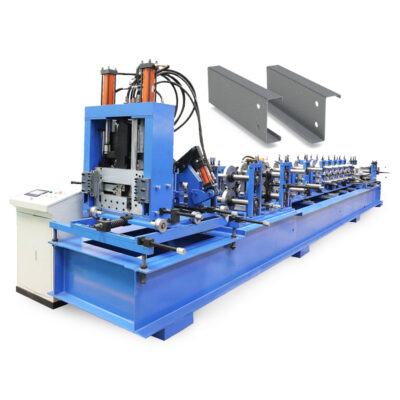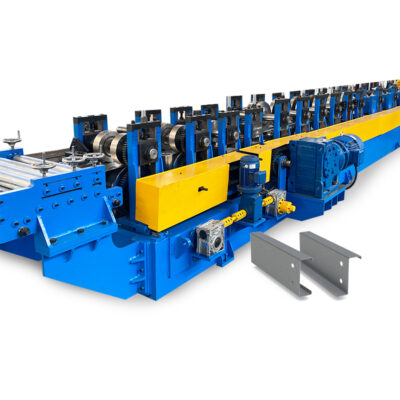निर्माण परियोजनाओं के लिए धातु भागों के निर्माण के संदर्भ में, व्यवसायों और व्यक्तियों के पास कई विकल्प उपलब्ध हैं। दो लोकप्रिय विधियां पर्लिन रोल फॉर्मिंग और पारंपरिक निर्माण हैं। हालांकि दोनों विधियां उच्च गुणवत्ता वाले भागों का उत्पादन करने में सक्षम हैं, लेकिन गति, लागत और अनुकूलन क्षमता के मामले में इनमें महत्वपूर्ण अंतर हैं। इस लेख में, हम पर्लिन रोल फॉर्मिंग और पारंपरिक निर्माण के लाभों और कमियों का पता लगाएंगे, तथा यह निर्धारित करने में आपकी सहायता करेंगे कि आपकी परियोजना आवश्यकताओं के लिए कौन सी विधि सबसे उपयुक्त है।
पर्लिन रोल फॉर्मिंग और पारंपरिक निर्माण का अवलोकन
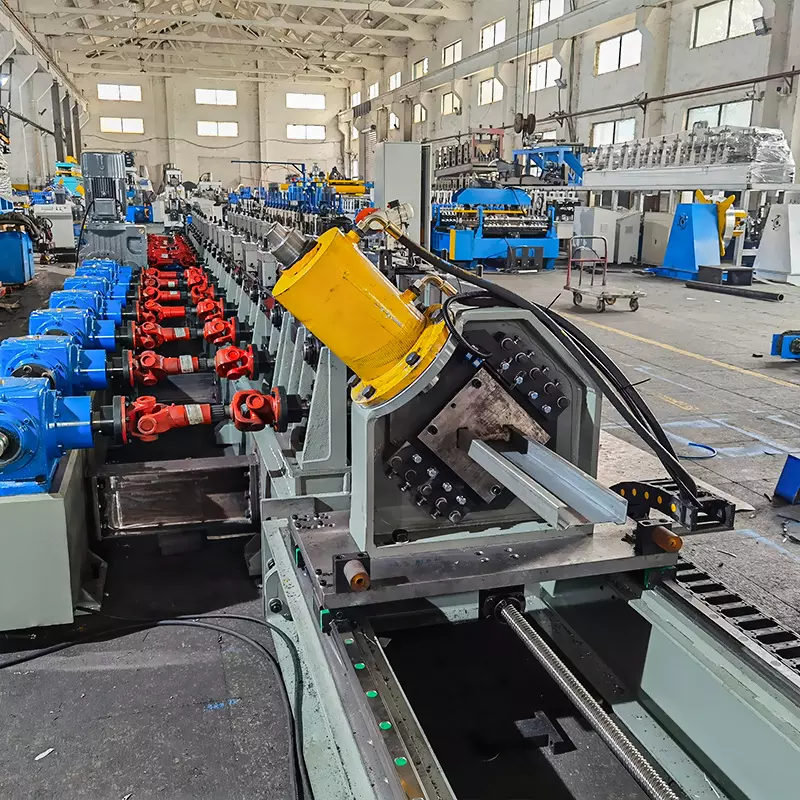
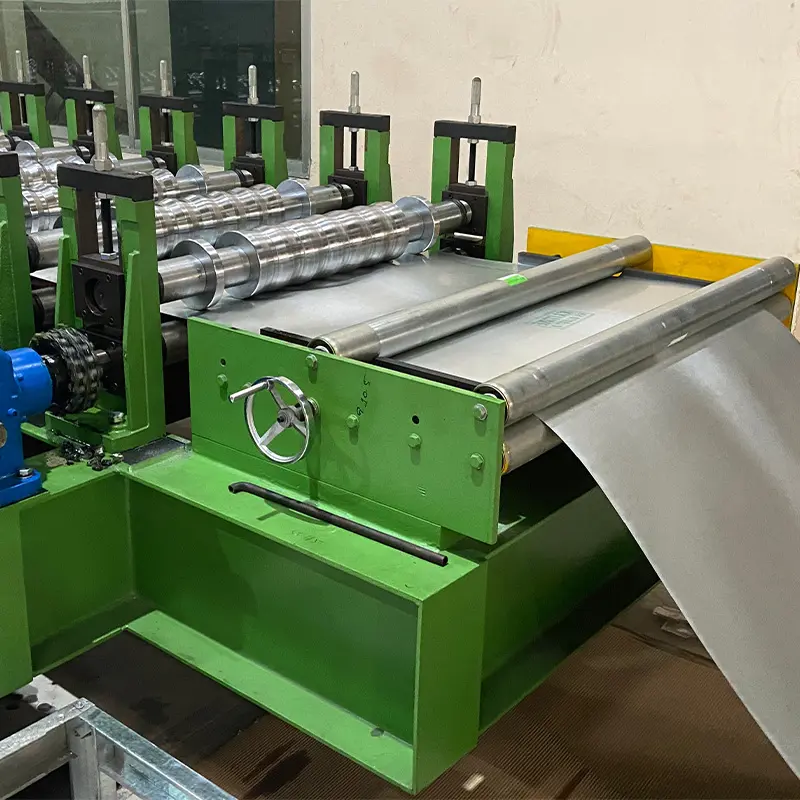
पर्लिन रोल फॉर्मिंग और पारंपरिक निर्माण निर्माण परियोजनाओं के लिए धातु भागों के निर्माण की दो सामान्य विधियां हैं। यहां प्रत्येक विधि का अवलोकन और इनके बीच अंतर दिए गए हैं:
शहतीर रोल बनानेपर्लिन रोल फॉर्मिंग एक निर्माण प्रक्रिया है जिसमें रोल फॉर्मिंग मशीन का उपयोग करके धातु को विशिष्ट प्रोफाइल या आकार में ढाला जाता है। धातु पट्टी को मशीन में डाला जाता है, जहां यह एक श्रृंखला के रोलर्स से गुजरती है जो इसे धीरे-धीरे वांछित आकार में ढालते हैं। पर्लिन रोल फॉर्मिंग मानकीकृत भागों के उच्च मात्रा उत्पादन के लिए एक तेज, कुशल और लागत-प्रभावी विधि है। यह अत्यधिक सटीक भी है, जो सुसंगत गुणवत्ता और परिशुद्धता वाले भागों का उत्पादन करती है।
पारंपरिक निर्माण: पारंपरिक निर्माण में विशेष उपकरणों और मशीनरी का उपयोग करके धातु भागों को मैन्युअल रूप से काटना, मोड़ना और ढालना शामिल है। यह विधि आकार और आकृति के संदर्भ में अधिक अनुकूलन और लचीलापन प्रदान करती है। हालांकि, पारंपरिक निर्माण समय लेने वाला और श्रम-गहन हो सकता है, जो लागत और वितरण समय को बढ़ा सकता है। यह कुशल श्रमिकों की आवश्यकता भी रखता है ताकि भागों का सटीक और सुसंगत निर्माण सुनिश्चित हो।
पर्लिन रोल फॉर्मिंग और पारंपरिक निर्माण के बीच मुख्य अंतर गति, लागत और अनुकूलन क्षमता में हैं। उच्च मात्रा में मानकीकृत भागों के उत्पादन के लिए पर्लिन रोल फॉर्मिंग तेज और अधिक लागत-प्रभावी है, जबकि अद्वितीय भागों के उत्पादन के लिए जो अधिक लचीलापन और परिशुद्धता की मांग करते हैं, पारंपरिक निर्माण बेहतर है। यह तय करते समय कि कौन सी विधि अपनानी है, व्यवसायों और व्यक्तियों को अपनी परियोजना आवश्यकताओं, बजट, समयसीमा और वांछित उत्पादन पर विचार करना चाहिए।
शहतीर रोल बनाने
पर्लिन रोल फॉर्मिंग प्रक्रिया में रोल फॉर्मिंग मशीन का उपयोग करके धातु को विशिष्ट प्रोफाइल या आकार में ढालना शामिल है। यहां शामिल बुनियादी चरण दिए गए हैं:
- सामग्री तैयारी: प्रक्रिया एक लंबी धातु पट्टी से आरंभ होती है, जिसे रोल फॉर्मिंग मशीन में खिलाया जाता है। धातु पट्टी गैल्वनाइज्ड स्टील, स्टेनलेस स्टील तथा एल्यूमीनियम सहित विविध सामग्रियों से निर्मित हो सकती है।
- रोल फॉर्मिंग: जब धातु पट्टी रोल फॉर्मिंग मशीन से गुजरती है, तो यह क्रमिक रूप से आकार प्रदान करने वाले रोलरों की शृंखला से होकर जाती है, जो इसे वांछित प्रोफाइल में ढालते हैं। प्रत्येक रोलर सेट धातु पर दबाव डालता है तथा उसे विशिष्ट तरीके से मोड़ता है ताकि प्रोफाइल का निर्माण हो। प्रत्येक रोलर का आकार एवं स्थिति वांछित आकार को सटीकता से उत्पन्न करने के लिए महत्वपूर्ण होती है।
- कट-ऑफ: एक बार धातु को वांछित आकार प्रदान करने के बाद, यह मशीन के कट-ऑफ खंड में पहुंचती है, जहां इसे उपयुक्त लंबाई में काटा जाता है।
- फिनिशिंग: तैयार भागों को सामान्यतः ढेर लगाकर पैक किया जाता है ताकि शिपमेंट या आगे की प्रक्रिया के लिए तैयार किया जा सके।
पर्लिन रोल फॉर्मिंग के लाभों में गति, सटीकता तथा लागत-प्रभाविता शामिल हैं। रोल फॉर्मिंग मशीनें उच्च मात्रा में भागों का उत्पादन तीव्रता से तथा निरंतरता के साथ कर सकती हैं, जो व्यवसायों को ग्राहक मांगों को पूरा करने तथा अपनी लाभप्रदता में सुधार करने में सहायता प्रदान करती हैं। इसके अतिरिक्त, रोल फॉर्मिंग मशीनें सटीक उपकरणों तथा प्रक्रियाओं का उपयोग करके सुसंगत गुणवत्ता तथा सटीकता वाले भाग उत्पन्न करती हैं, जिससे अपशिष्ट तथा पुनर्कार्य में कमी आती है।
पर्लिन रोल फॉर्मिंग लागत-प्रभावी भी है क्योंकि यह मैनुअल श्रम की आवश्यकता को कम करता है तथा पारंपरिक निर्माण विधियों की तुलना में कम लागत पर भाग उत्पन्न कर सकता है। इससे निर्माण उद्योग के व्यवसायों के लिए यह उच्च मात्रा में मानकीकृत भागों के उत्पादन हेतु लोकप्रिय विकल्प बन जाता है।
समग्र रूप से, पर्लिन रोल फॉर्मिंग एक अत्यधिक कुशल तथा सटीक विनिर्माण प्रक्रिया है जो विविध धातु आकारों तथा प्रोफाइलों का उत्पादन कर सकती है। सटीक उपकरणों तथा प्रक्रियाओं का उपयोग करके, रोल फॉर्मिंग मशीनें उद्योग मानकों को पूरा करने या उनसे अधिकतर भाग उत्पन्न कर सकती हैं, जिससे वे विविध उद्योगों के व्यवसायों के लिए मूल्यवान निवेश बन जाती हैं।
पारंपरिक निर्माण
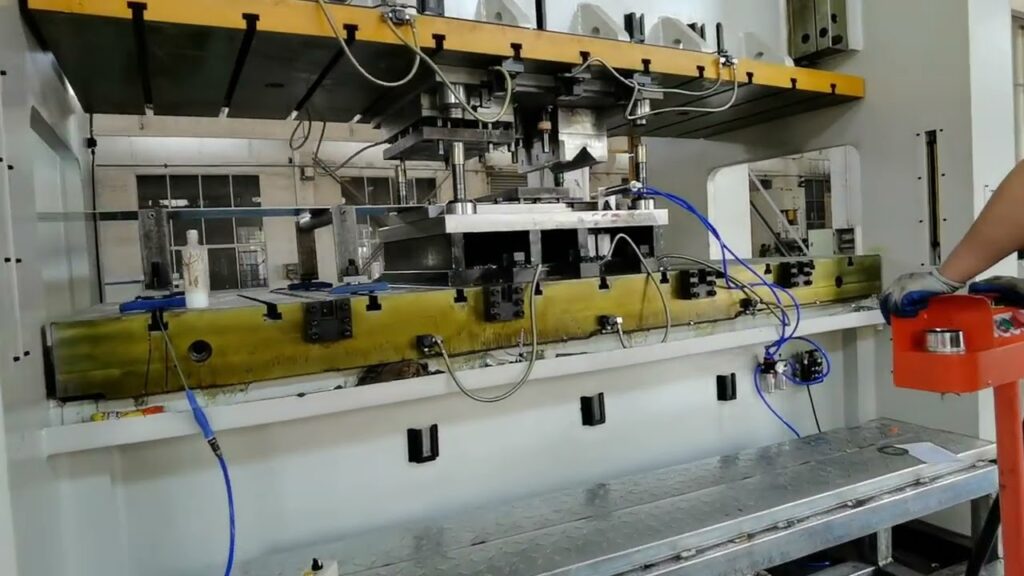
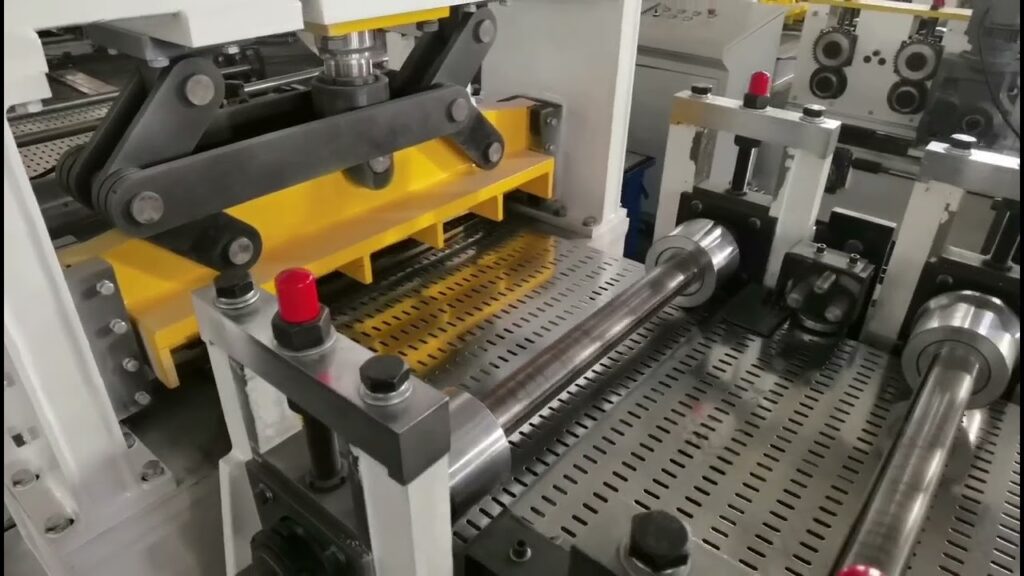
पारंपरिक निर्माण एक मैनुअल प्रक्रिया है जिसमें विशेष उपकरणों तथा उपकरणों का उपयोग करके धातु भागों को काटना, मोड़ना तथा आकार प्रदान करना शामिल होता है। यहां शामिल बुनियादी चरण दिए गए हैं:
- डिजाइन: प्रक्रिया भाग या घटक के लिए डिजाइन या ब्लूप्रिंट से आरंभ होती है जिसे निर्माण की आवश्यकता है।
- सामग्री चयन: स्टील या एल्यूमीनियम, भाग की आवश्यकताओं के आधार पर धातु सामग्री का चयन किया जाता है।
- कटिंग: धातु सामग्री को आवश्यक आकार तथा आकार में काटने के लिए कटिंग उपकरणों जैसे आरी या कैंची का उपयोग किया जाता है।
- फॉर्मिंग: धातु सामग्री को तब विशेष उपकरणों जैसे प्रेस, ब्रेक या रोलरों का उपयोग करके वांछित रूप में मोड़ा तथा आकार प्रदान किया जाता है।
- वेल्डिंग: धातु टुकड़ों को अंतिम भाग या घटक का निर्माण करने के लिए वेल्ड किया जाता है।
- फिनिशिंग: तैयार भागों को आवश्यकतानुसार साफ किया जाता है, चिकना किया जाता है तथा पेंट या कोटिंग किया जाता है।
पारंपरिक निर्माण के लाभों में भागों को अनुकूलित करने की क्षमता तथा कुशल श्रम की उपलब्धता शामिल है। पारंपरिक निर्माण के साथ, भागों को विशिष्ट डिजाइन आवश्यकताओं या अद्वितीय विनिर्देशों को पूरा करने के लिए अनुकूलित किया जा सकता है। कुशल धातु निर्माणकर्ता अपनी विशेषज्ञता का उपयोग करके परियोजना की आवश्यकताओं के अनुरूप तैयार भाग बना सकते हैं। इसके अतिरिक्त, पारंपरिक निर्माण कुशल श्रम पर निर्भर करता है, जो अनेक क्षेत्रों में आसानी से उपलब्ध होता है। इसका अर्थ है कि व्यवसाय तीव्रता से कुशल निर्माणकर्ताओं को अपनी परियोजनाओं को पूरा करने के लिए प्राप्त कर सकते हैं।
हालांकि, पारंपरिक निर्माण समय लेने वाला तथा श्रम-गहन हो सकता है, जो लागतों तथा वितरण समय को बढ़ा सकता है। यह विशेष उपकरणों तथा उपकरणों की आवश्यकता रखता है, जिनकी खरीद तथा रखरखाव महंगा हो सकता है।
समग्र रूप से, पारंपरिक निर्माण एक मैनुअल प्रक्रिया है जो रोल फॉर्मिंग की तुलना में अधिक लचीलापन तथा अनुकूलन प्रदान करती है। हालांकि, यह निम्न मात्रा उत्पादन रनों के लिए अधिक उपयुक्त है तथा बड़े उत्पादन रनों के लिए रोल फॉर्मिंग की तुलना में कम लागत-प्रभावी हो सकता है। व्यवसायों को अपनी विशिष्ट परियोजना आवश्यकताओं के लिए उपयोग करने हेतु दोनों विधियों के पक्ष तथा विपक्ष का मूल्यांकन करना चाहिए।
पर्लिन रोल फॉर्मिंग तथा पारंपरिक निर्माण की तुलना
यहां पर्लिन रोल फॉर्मिंग तथा पारंपरिक निर्माण की तुलना प्रस्तुत है, जो गति, लागत, सटीकता तथा अनुकूलन क्षमता के संदर्भ में अंतरों को रेखांकित करती है:
गति: पर्लिन रोल फॉर्मिंग पारंपरिक निर्माण से तेज है क्योंकि यह भागों का तीव्र तथा कुशल उत्पादन करने हेतु स्वचालित मशीनों पर निर्भर करती है। दूसरी ओर, पारंपरिक निर्माण एक मैनुअल प्रक्रिया है जो समय लेने वाली तथा श्रम-गहन हो सकती है।
लागत: पर्लिन रोल फॉर्मिंग सामान्यतः उच्च मात्रा उत्पादन रनों के लिए पारंपरिक निर्माण से अधिक लागत-प्रभावी होती है। रोल फॉर्मिंग मशीनें न्यूनतम श्रम के साथ तीव्रता से भाग उत्पन्न कर सकती हैं, जिससे श्रम तथा उत्पादन समय से जुड़ी लागतें कम हो जाती हैं। दूसरी ओर, पारंपरिक निर्माण कुशल श्रम तथा विशेष उपकरणों के कारण अधिक महंगा हो सकता है।
सटीकता: पर्लिन रोल फॉर्मिंग अत्यधिक सटीक होती है क्योंकि यह सुसंगत तथा एकसमान भाग उत्पन्न करने हेतु सटीक उपकरणों तथा प्रक्रियाओं पर निर्भर करती है। पारंपरिक निर्माण कम सटीक हो सकता है, क्योंकि इसमें मैनुअल कटिंग, मोड़ना तथा आकार प्रदान करना शामिल होता है, जो अंतिम उत्पाद में विविधताओं का कारण बन सकता है।
अनुकूलन क्षमता: पारंपरिक निर्माण पर्लिन रोल फॉर्मिंग की तुलना में अधिक अनुकूलन क्षमता प्रदान करता है, क्योंकि यह डिजाइन तथा अनुकूलन के संदर्भ में अधिक लचीलापन प्रदान करता है। रोल फॉर्मिंग मशीनें उच्च मात्रा में मानकीकृत भागों के उत्पादन के लिए सर्वोत्तम होती हैं, जबकि पारंपरिक निर्माण अद्वितीय या अनुकूलित भाग उत्पन्न कर सकता है।
समग्र रूप से, पर्लिन रोल फॉर्मिंग तथा पारंपरिक निर्माण के बीच चयन परियोजना की विशिष्ट आवश्यकताओं पर निर्भर करेगा। पर्लिन रोल फॉर्मिंग सुसंगत तथा एकसमान भागों की आवश्यकता वाले उच्च-मात्रा उत्पादन रनों के लिए आदर्श है। पारंपरिक निर्माण निम्न-मात्रा उत्पादन रनों के लिए अधिक उपयुक्त है जहां अधिक लचीलापन तथा अनुकूलन की आवश्यकता होती है। व्यवसायों को प्रत्येक विधि के लाभों तथा हानियों का सावधानीपूर्वक मूल्यांकन करना चाहिए तथा गति, लागत, सटीकता तथा अनुकूलन क्षमता जैसे कारकों पर विचार करना चाहिए।
निष्कर्ष रूप में, पर्लिन रोल फॉर्मिंग तथा पारंपरिक निर्माण निर्माण परियोजनाओं के लिए धातु भागों के विनिर्माण हेतु दो लोकप्रिय विधियां हैं। पर्लिन रोल फॉर्मिंग उच्च मात्रा में मानकीकृत भागों के उत्पादन हेतु तेज, अधिक सटीक तथा लागत-प्रभावी है, जबकि पारंपरिक निर्माण अद्वितीय या अनुकूलित भागों के लिए अधिक अनुकूलन क्षमता प्रदान करता है। व्यवसायों तथा व्यक्तियों को प्रत्येक विधि के लाभों तथा हानियों का सावधानीपूर्वक मूल्यांकन करना चाहिए। अंततः, पर्लिन रोल फॉर्मिंग तथा पारंपरिक निर्माण के बीच चयन परियोजना की विशिष्ट आवश्यकताओं पर निर्भर करेगा, जिसमें गति, लागत, सटीकता तथा अनुकूलन क्षमता जैसे कारक शामिल हैं।

